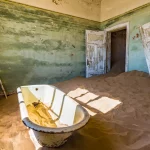Greenlanders are heading to the polls on Tuesday in a pivotal parliamentary election shaped by the perennial debate over independence from overseer Denmark — and by U.S. President Donald Trump’s ambitions to get hold of the island “one way or the other.”
The majority of the Arctic island’s six main political parties support independence, and the most recent voter poll in January suggested the pro-independence Inuit Ataqatigiit party could retain power in the 31-seat parliament, the Inatsisartut, likely followed in second place by its erstwhile coalition partner, Siumut.
Both parties say they want to hold a referendum on political and economic independence from Denmark, although neither has set down a clear timeframe.
Denmark oversees Greenland’s defense and foreign policy but leaves domestic matters to Greenland’s government. Still, Copenhagen provides an annual block grant of roughly $511 million to the island which accounts for approximately 20%of Greenland’s GDP, and more than half of the public budget, according to International Trade Administration data.
Copenhagen has repeatedly insisted that Greenland is “not for sale” and that it will remain a part of its kingdom, yet it’s wary of the momentum behind independence and has been quiet ahead of the election, wary of appearing to dictate how islanders should vote.
There’s no doubt that Trump’s designs on the island and its abundance of rare earth minerals have caused alarm in Denmark, however. Danish Prime Minister Mette Frederiksen described the idea as “absurd” when Trump first mooted it in 2019.







